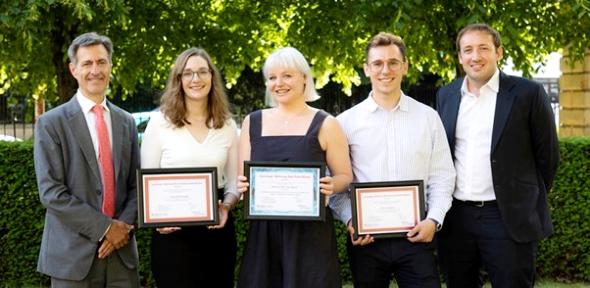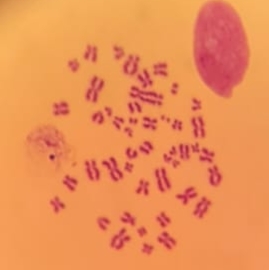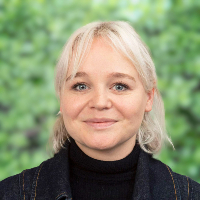
How do we determine what is a tolerable risk from low-level radiation and how much are we willing to spend on reducing it?
Ionising radiation is impossible to sense; it doesn’t have a smell, a taste, a sound, a texture, or a characterizing appearance. Nevertheless, high-level ionising radiation can damage our bodies and result in serious health effects (e.g. Acute Radiation Sickness). In cases of low-level ionising radiation exposure, the health risks are more difficult to pinpoint. These primarily actualise as an increased probability of developing cancer (known as stochastic effects). To protect from its potential harmful effects, instruments have been invented, units have been defined, and risk models have been developed that help make sense of radiation risks.
The International Commission on Radiological Protection (ICRP) plays an important role in developing recommendations to ensure sufficient radiological protection in cases of radiation exposure. ICRP publications describe, among others, the ethics, principles, and frameworks of a practical radiological protection culture. The totality of the ICRP recommendations is commonly referred to as “The System for Radiological Protection”. These are over time transposed into guidelines and codes and standards published by international organisations (e.g. the International Atomic Energy Agency) and, eventually, are adopted by national regulatory authorities (e.g. the UK Office for Nuclear Regulation).
The image on the right shows DNA that has been exposed to radiation.
The System for Radiological Protection is currently under review by the ICRP. In the next 10 years, the existing recommendations will be reviewed and revised focusing on, at least, three areas of evolution: health effects of ionising radiation, radiological protection of the environment, and application of the System. After identifying key topics of review, 30 Task Groups have been assigned to the review. Notably, the work includes a review of risk assessment and management practices of low-dose and low-dose rate exposures. In radiological protection, the linear non-threshold (LNT) model is used to infer stochastic risk from exposures at low-dose and low-dose rate.
Based on the assumption that there is no safe dose of radiation, the risk model is closely linked to the Optimisation Principle. The Optimisation Principle, also known as ALARA, is defined by the ICRP as “the source related process to keep the likelihood of incurring exposures, the number of people exposed, and the magnitude of individual doses as low as reasonably achievable, taking into account economic and social factors” (ICRP Publication 103). It is one of the fundamental principles guiding the ICRP System for Radiological Protection, intended to instill prudence and precaution in activities involving radiation.
In nuclear safety cases, facilities must demonstrate and provide evidence that radiation protection measures are incorporated into their engineering designs to minimise exposures to workers and the public to ALARA. The principle has been incredibly successful as a driver to minimize exposures, as evidenced by the recorded doses of exposure to nuclear workers in the UK. Although exposure limits are set at 1mSv/yr (public) and 20mSv/yr (nuclear workers), the mean dose to a nuclear worker in the UK is of the order of 0.4mSv/yr. On top of that, natural background exposure in the UK varies between 2 and 8 mSv/yr. This prompts the question: when have we reduced exposures sufficiently and how much are we willing to spend on reducing exposures that are already below background levels?
To complicate matters further, the scientific validity and applicability of the LNT model are current topics of controversy. Questions surrounding its scientific validity arise as scientists attempt to understand and learn from the dense collection of data gathered over the past decades. Data originating from large epidemiological as well as in-vitro cell studies that inform predicted dose-response relationships have proven to be consistent with the LNT model as well as other alternatives (e.g. threshold models). Considering the difficulty of obtaining statistically significant results, we are left with inherent uncertainties related to the health risks associated to low-dose and low-dose rate exposures. The risks related to low-level radiation are thus not only by definition small, but also undemonstrated – prompting critical questions on how we, as a society, have been managing low-level radiation risks. Nevertheless, based on recent conversations within the ICRP, the LNT model is likely to be retained on the ground that it is deemed a practical and prudent model for radiation protection.
This essay which reviews the scientific evidence underpinning the LNT model can be downloaded here. It was awarded the 2023 Cambridge-McKinsey Risk Prize by The Cambridge Centre for Risk Studies, in conjunction with McKinsey & Company.
|
Sannah van Balen is a second-year PhD student at Christ’s College, conducting research in the Nuclear Energy group at the Engineering Department. Her research combines knowledge and insight from sociology, health science, and engineering to investigate how radiation risks are assessed and managed within the nuclear sector. She is particularly interested in evaluating how uncertainty regarding low-level radiation risks and ambiguity in radiation regulations may lead to costly engineering outcomes. Previously based in the Netherlands, she worked as an energy transition consultant to Dutch industry and policymakers. She regularly moderates and hosts panel sessions, webinars, and conferences on nuclear energy and actively participates in the societal conversation on the potential of nuclear energy as a climate change mitigator. |



